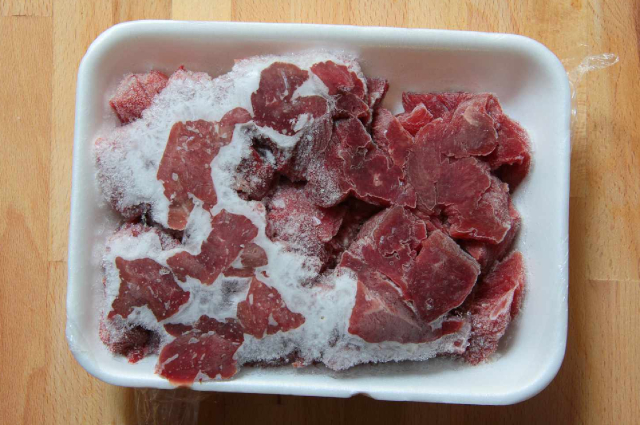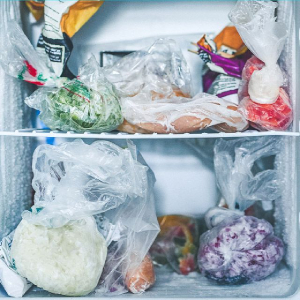We’ve all taken a great steak out of the freezer – and found it dried out and useless. Now that folks are relying on their freezers more, to help them take advantage of fresh food ‘specials’, and ‘Freezer Burn’ is costing us more in wastage…

It used to be that freezer burn was nothing more than a disappointing nuisance. But now that meat (in particular) is so much more expensive than it was pre-COVID, losing a bargain buy to desiccation is a serious issue.
What can we do to fix or avoid freezer burn? The Washington Post (WAPO) recently asked a battery of experts…
What it is
“The moisture-carrying capacity of air decreases with temperature,” said Rohan Tikekar, an associate professor of food science at the University of Maryland. “During freezer storage, the conditions, particularly the temperatures, are such that water can sublimate directly from a solid state to a gaseous state that completely skips the [liquid] state,”
And that gaseous water can easily leak out of less-than-perfectly-sealed bags or rigid containers.
Freezer burn most commonly shows up as ice crystals that have formed on the surface of the food. Which is not to say, the outer surface of the container. That’s alright. Certain foods, WAPO notes, “particularly meat, can look shriveled and leathery as they dry out.” Though they appear to be inside a sealed package.
What you can do
“If food does suffer from freezer burn, cut off the affected areas — before or after cooking — and use the rest of the food,” WAPO staff writer Becky Krystal wrote in a guide to using your freezer.
That’s definitely a last resort, as far as I’m concerned. Or second-last, before throwing out the whole package. Considering what you paid for the food, you’ll want to at least try to save as much as you can.
Avoiding freezer burn in the first place
There a number of points the WAPO story enumerates which can help us avoid dreaded freezer burn.
“The water has to escape the packaging for it to become an issue,” Tikekar sais. “So if you choose a packaging [that] is harder or [that] doesn’t allow for the water vapor to pass through the container, you will have a better chance of not having freezer burn.”
- Glass storage containers are a great option.
- If you choose plastic zip-top bags, make sure to use ones intended for the freezer as they are thicker than regular bags and thus better at sealing in moisture.
- With bags in particular, you want to push out as much air as possible to minimize exposure to that cold, dry freezer air.
- And with any container, you want a tight seal. So on freezer bags, make sure the zipper is closed end-to-end.
Time is of the essence
Also… The longer you leave something in the freezer, the greater the chance that it will dry out. Whirlpool, the appliance people, have posted a list of the most common foods we freeze, with recommendations on the max time you should store them frozen.
Not a food poisoning risk!
Freezer burn is entirely an esthetic issue. Desiccation can affect the flavour, texture, colour and the nutritional value of food. But it doesn’t pose an increased risk of food-borne illness. That’s strictly a bacterial issue.
So don’t sweat that angle in reference to freezer burn. Just concentrate on doing everything you can to protect your freezer foods!
~ Maggie J.

